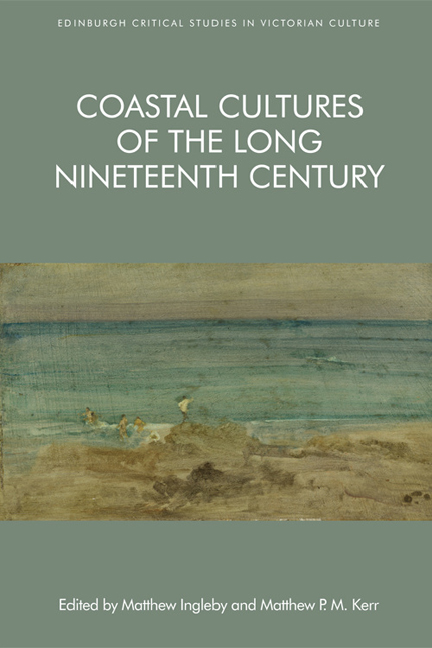7 - Tennyson’s ‘Sea Dreams’: Coastal and Fiscal Boundaries
Published online by Cambridge University Press: 01 May 2021
Summary
Tennyson became acquainted with Dr Matthew Allen through the Tennyson family's involvement with Allen's asylum at High Beech in Essex, which was situated close to their home in Epping. Septimus Tennyson was treated briefly at this institution, where John Clare was a long-term patient. Allen had enjoyed a chequered career, having twice been imprisoned for debt and been involved in a failed soda-water factory in Scotland. He was a Sandemanian who, having acted as an apothecary to the York asylum, somewhat dubiously acquired a medical degree in 1821 and subsequently opened the High Beech asylum in 1825. In 1840, Allen informed Tennyson of ‘plans he had for becoming so rich that he would no longer have to run an insane asylum’. This new project was for a steam-powered woodturning machine called a pyroglyph, and as R. B. Martin observes, ‘Allen's ebullience must have been attractive to Tennyson when he was in such a depressed state, and when he offered Tennyson a chance to become rich … the lure of wealth was too much.’ As described by Valentine Cunningham, the scheme was one whereby ‘chairs, tables, rood screens, and so on, were to be reproduced in large numbers’, in ‘a money-making mass-production line to meet a Victorian taste for solid furnishings’. In November 1840, Tennyson paid Allen £900, with further payments eventually totalling some £4,000, and the poet's sisters also subscribed a considerable sum, despite the timely warning of Edward Fitzgerald that Allen was ‘not a man to be trusted’. By late 1842, the ‘crash of the wood-turning scheme had come about with a frightening rapidity’ and Tennyson was now ‘trying to get out of his association with Allen’, at which juncture he characterised himself as ‘a penniless beggar and deeply in debt’. In all, the Tennyson family had unadvisedly invested some £8,000 in Allen's scheme, which terminated in the doctor's death from heart failure in 1845, after which Tennyson recouped a portion of his heavy losses. It was some years later, in the late 1850s, that Tennyson would address this financial imbroglio poetically in ‘Sea Dreams’, first published in Macmillan's Magazine in 1860 and subsequently in his 1864 volume, Enoch Arden and Other Poems.
- Type
- Chapter
- Information
- Coastal Cultures of the Long Nineteenth Century , pp. 135 - 146Publisher: Edinburgh University PressPrint publication year: 2018



